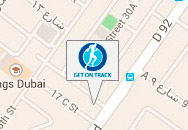Call Us Today!
04 380 55 69

Center Address :
Al Wasl Road, Umm Suqeim 3
Dubai, United Arab Emirates
Telephone : 04 380 55 69
Email : info@gotdubai.com 

COMMON HAND PATHOLOGIES
Arthritis
Arthritis is a joint inflammation and commonly occurs at the base of the thumb. The pain associated with arthritis may be from many different sources, including inflammation of the following:
- Synovial membrane – a clear, sticky fluid that is released by the synovial membrane and acts as a lubricant for joints and tendons.
- Tendons – the tough cords of tissue that connects muscles to bones.
- Ligaments – a white, shiny, flexible band of fibrous tissue that binds joints together and connects various bones and cartilage
Osteoarthritis
Is a degenerative joint disease, is the most common type of arthritis in older people. Osteoarthritis located in the hands or hips may run in families, or may be caused by injuries, overuse, muscle strain, or fatigue.
Heberden Nodes
Abnormal enlargements of the bone or cartilage – about the size of a pea or smaller – may occur in the finger joints, and may be aggravated by osteoarthritis
Carpal Tunnel Syndrome
Carpal tunnel syndrome is a condition in which the median nerve is compressed as it passes through the carpal tunnel in the wrist, a narrow confined space. Symptoms may include:
- Difficulty making a fist
- Difficulty gripping objects with the hand(s)
- Pain and/or numbness in the hand(s)
- “Pins and needles” feeling in the fingers
- Swollen feeling in the fingers
- Burning or tingling in the fingers, especially the thumb and the index and middle fingers
Always consult your physician for a diagnosis.
Treatment may include:
- splinting of the hand (to help prevent wrist movement and decrease the compression of the nerves inside the tunnel)
- oral or injected (into the carpal tunnel space) anti-inflammatory medications (to reduce the swelling)
- surgery (to relieve compression on the nerves in the carpal tunnel)
- changing position of a computer keyboard, or other ergonomic changes
- Physiotherapy can help as well with Stretching, Taping, Ultrasound applications, cold or hot applications.
Ganglion Cysts
Soft, fluid-filled cysts can develop on the front or back of the hand for no apparent reason. These Symptoms may include:
- Wrist pain that is aggravated with repeated use or irritation
- A slow growing, localized swelling, with mild aching and weakness in the wrist
- An apparent cyst that is smooth, firm, rounded, and/or tender
The symptoms of ganglion cysts may resemble other medical conditions or problems. Always consult your physician!
Initially, when the cyst is small and painless, treatment is usually not necessary. Only when the cyst begins to grow and interferes with the functionality of the hand is treatment usually necessary. Treatment may include:
- Rest
- Splinting
- Non steroidal anti-inflammatory medications
- Aspiration
- Cortisone injections
- Surgery
Tendon Problems
Two major problems associated with tendons include Tendonitis and Tenosynovitis.
Tendonitis
Inflammation of a tendon, can affect any tendon, but is most commonly seen in the wrist and fingers. When the tendons become irritated, swelling, pain, and discomfort will occur.
Tenosynovitis
Is the inflammation of the lining of the tendon sheaths which enclose the tendons. The tendon sheath is usually the site which becomes inflamed, but both the sheath and the tendon can become inflamed simultaneously. The cause of Tenosynovitis is often unknown, but usually strain, overuse, injury, or excessive exercise may be implicated. Tendonitis may also be related to diabetes or rheumatoid arthritis.
DeQuervain's Tenosynovitis
The most common type of Tenosynovitis disorder characterized by the tendon sheath swelling in the tendons of the thumb. Treatment can include :
– Splinting
– Rest
Physiotherapy plays big role in functional rehabilitation and prevention of recurrence, after symptoms are reduced by Anti inflammatory medication.
Trigger Finger/Trigger Thumb
Tenosynovitis condition in which the tendon sheath becomes inflamed and thickened, thus preventing the smooth extension or flexion of the finger/thumb. The finger/thumb may lock or “trigger” suddenly.
Treatment for most tendon problems may include:
- Activity modification
- Splinting or immobilization
- Steroid injections
- Anti-inflammatory medications
- Surgery
- Physiotherapy